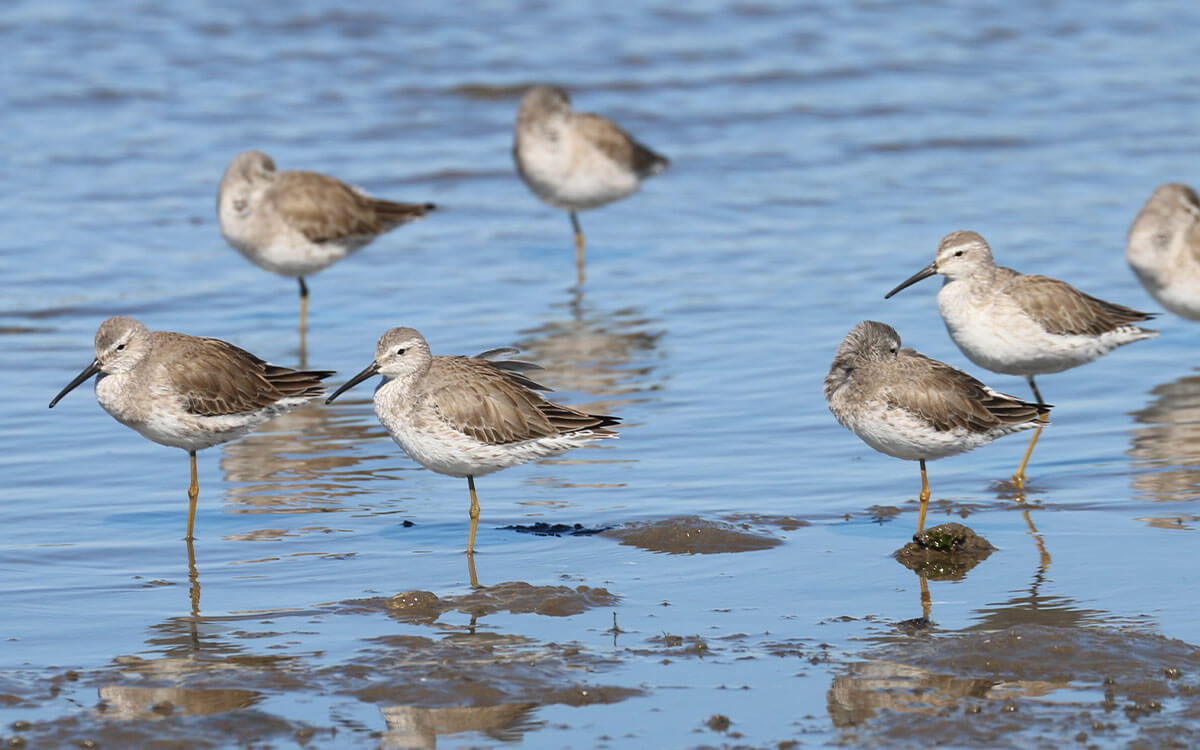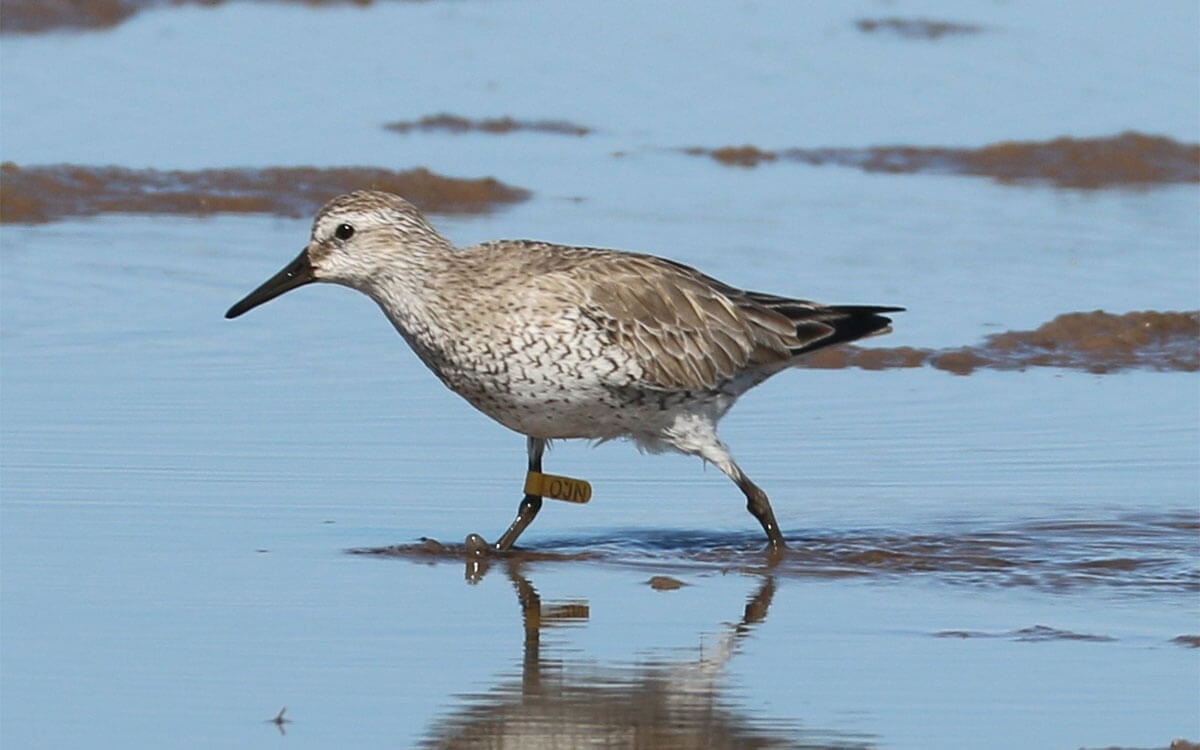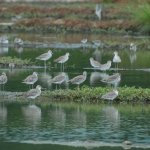The Yavaros-Moroncárit lagoons in Mexico have been designated as a Site of Regional Importance in the Western Hemisphere Shorebird Reserve Network (WHSRN). This site plays host to close to 8% of the global population of the Marbled Godwit (Limosa fedoa) and more than 1% of the populations of other species such as the Snowy Plover (Charadrius nivosus), Western Sandpiper (Calidris mauri), Pacific subspecies of both the American Oystercatcher (Haematopus palliatus frazari) and Red Knot (C. canutus roselaari), and the American Avocet (Recurvirostra americana).
The Yavaros-Moroncárit lagoons form part of the area of influence of the Flora and Fauna Protected Areas of the Islands of the California-Sonora Gulf, and are also part of a protected area managed by the National Commission for Protected Areas (Comisión Nacional de Áreas Naturales Protegidas – CONANP). They encompass more than 10,000 hectares of mangroves, mudflats, sandbanks, low beaches with stabilizing dunes and banks with marine grasses and algae. The area has also been declared a Wetland of International Importance under the Ramsar Convention, a Priority Wetland for Shorebirds, an Important Bird Area and a Priority Wetland for Waterbirds in Mexico.
The research and conservation actions conducted by the Avian Laboratory of the UABCS (Laboratorio de Aves de la Universidad Autónoma de Baja California Sur – UABCS) and Pronatura Noroeste (PNO) have made it possible to demonstrate the importance of this wintering site on the Pacific American Flyway. During their winter monitoring, more than 85,500 shorebirds of 19 species have been recorded, some of which are protected by Mexican law. Additionally, it is also a reproductive site for at least four species of shorebirds (Black-necked Stilt Himantopus mexicanus, Snowy Plover Charadrius nivosus, Wilson’s Plover C. wilsonia and American Oystercatcher Haematopus palliatus frazari).


Small flock of Stilt Sandpipers (Calidris himantopus) at Moroncarit, an uncommon species at the site. Right: Pacific Red Knot banded in the Upper Gulf of California in 2012 and seen at Yavaros in 2018. Photos: Roberto Carmona.
According to Roberto Carmona, Director of the Avian Laboratory of the UABCS and a scientific advisor for PNO, “Until a few years ago there were still gaps in our knowledge of the importance of the wetlands of southern Sonora, and it was necessary to collect the basic data that allowed us to recognize the regional importance of these sites in order to take conservation decisions and actions”.
Some of the principal threats to the site include overfishing, discharges of contaminants, the modification of the coastal zones for the shrimp-farming industry, salt extraction and ranching. There are also certain negative effects associated with the development of industrial activities in the area, and erosion as a result of deforestation for agricultural and urbanization projects. Despite these threats, Natalie Rodríguez Dowdell, Coordinator of the Bird Conservation Program of PNO explains that “The designation of these lagoons as a WHSRN site will considerably strengthen conservation actions, as the resident and migratory shorebirds need them to feed, rest and breed”.
With the inclusion of the Yavaros-Moroncárit lagoons in the network, Mexico now has a total of 20 WHSRN sites, representing 18% of the 111 sites that make up the network. Please, join the Executive Office of the WHSRN in giving a warm welcome to our partners in the conservation of the Yavaros-Moroncárit lagoons.
For more information about this site contact Dr. Roberto Carmona Piña, Director of the Avian Laboratory of the UABCS: beauty@uabcs.mx
Cover Photo: Part of a flock of Marbled Godwit, an emblematic species of the site, resting at Yavaros. Photo: Roberto Carmona.






